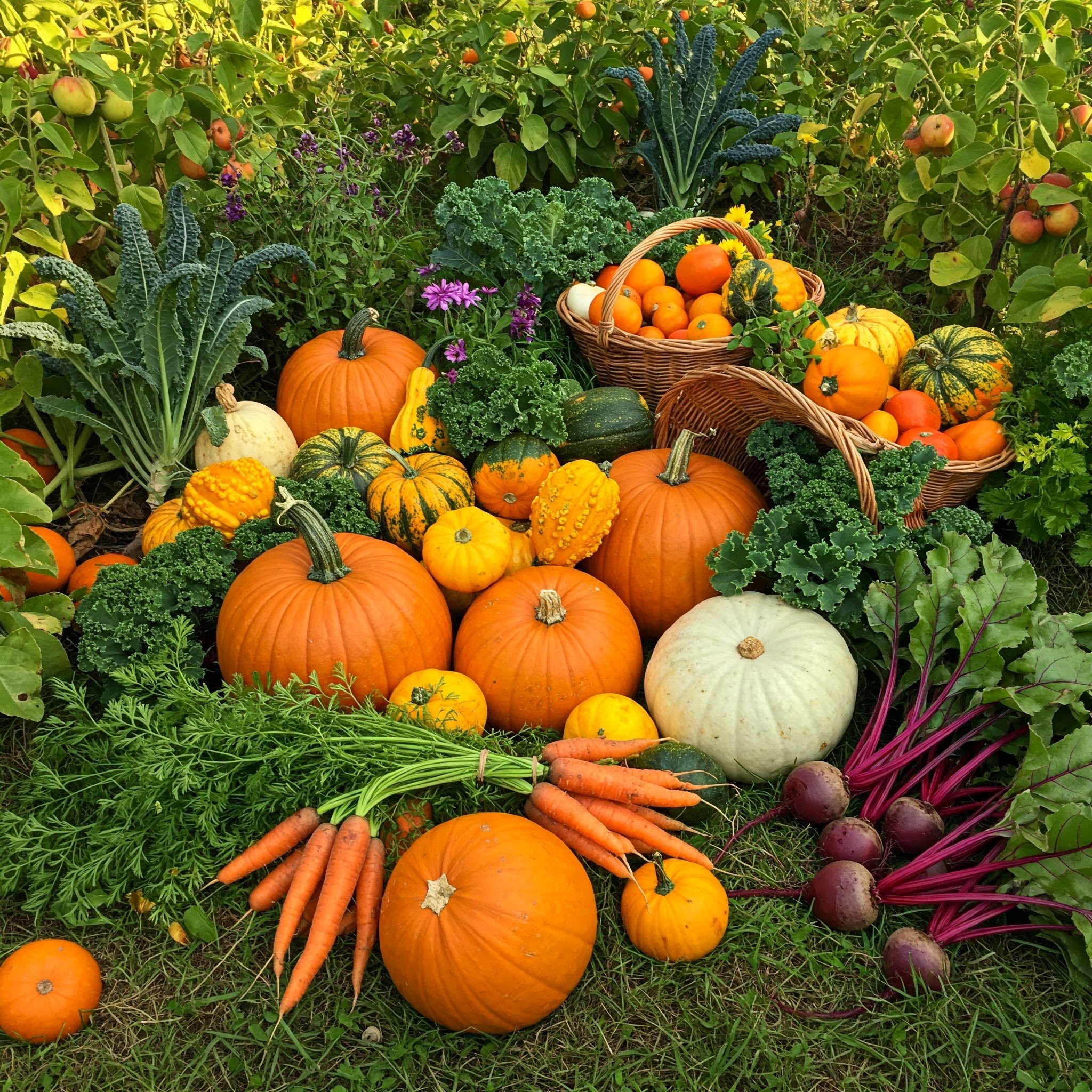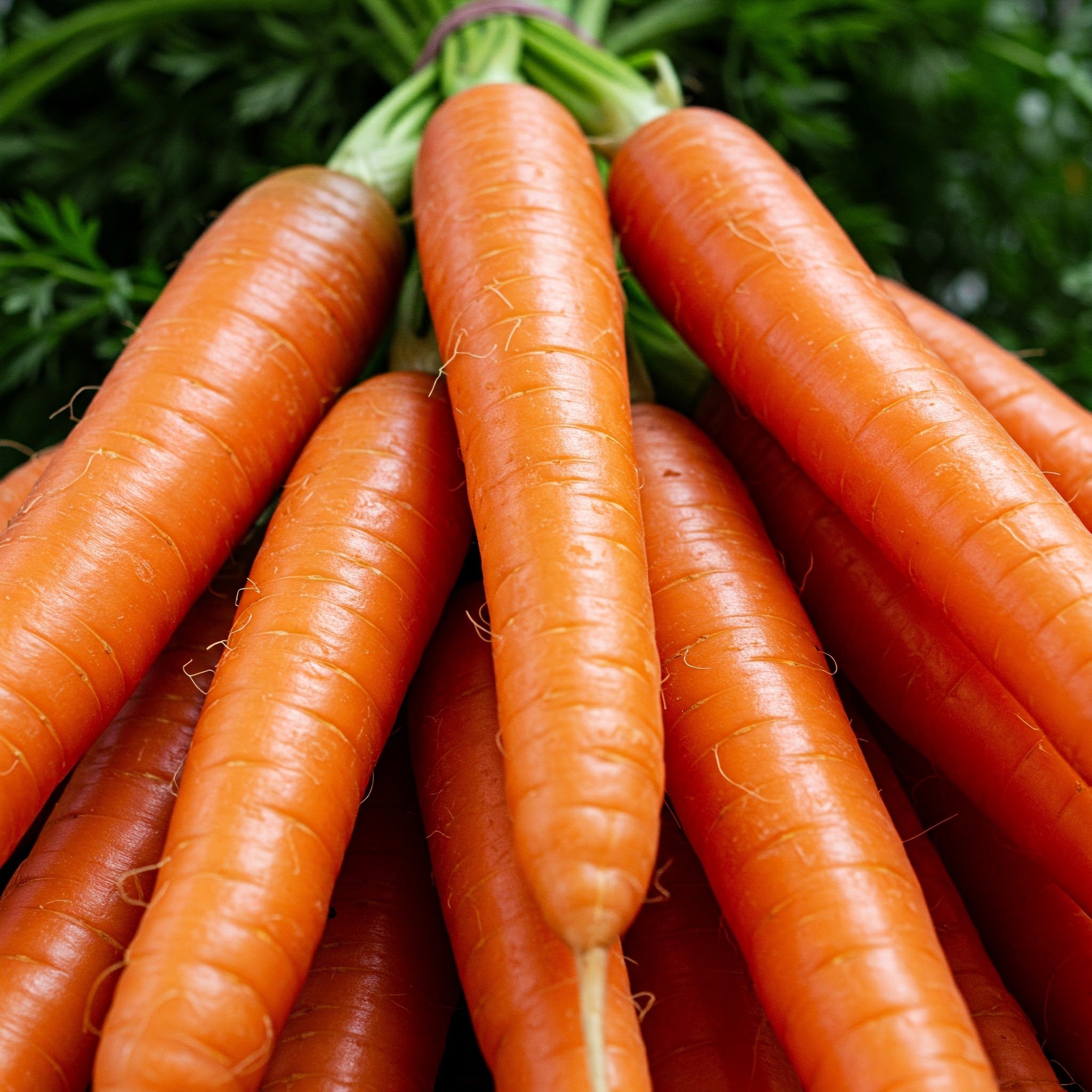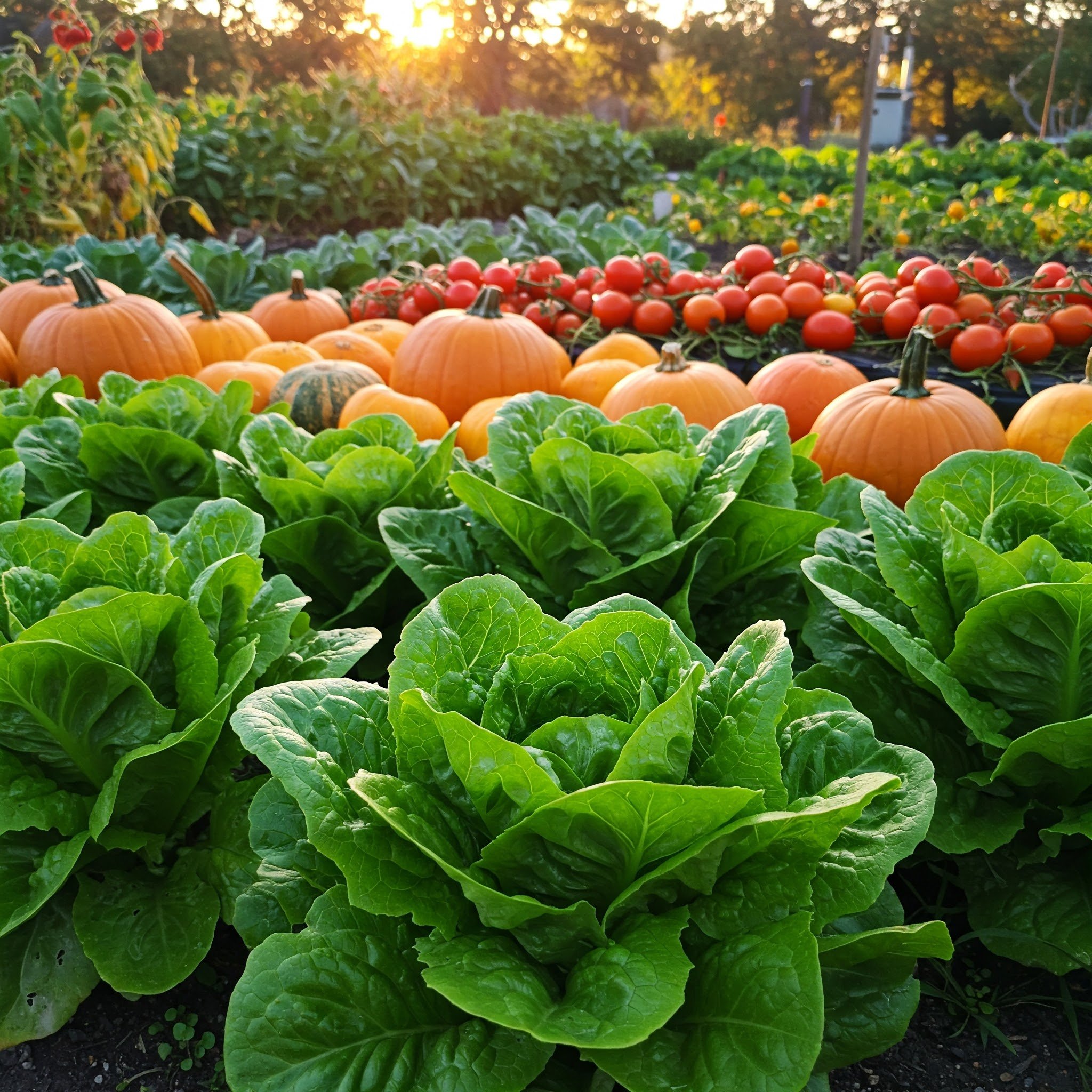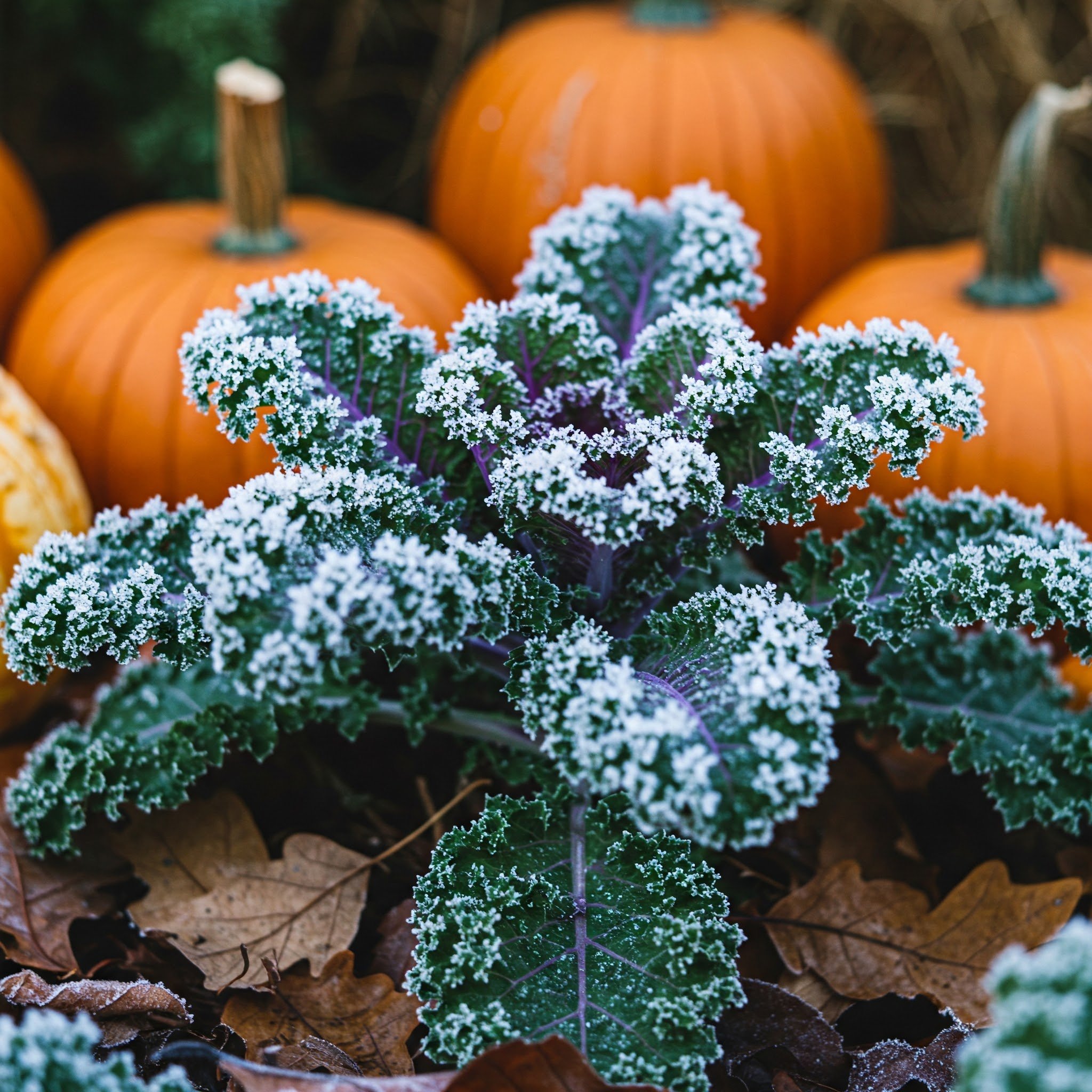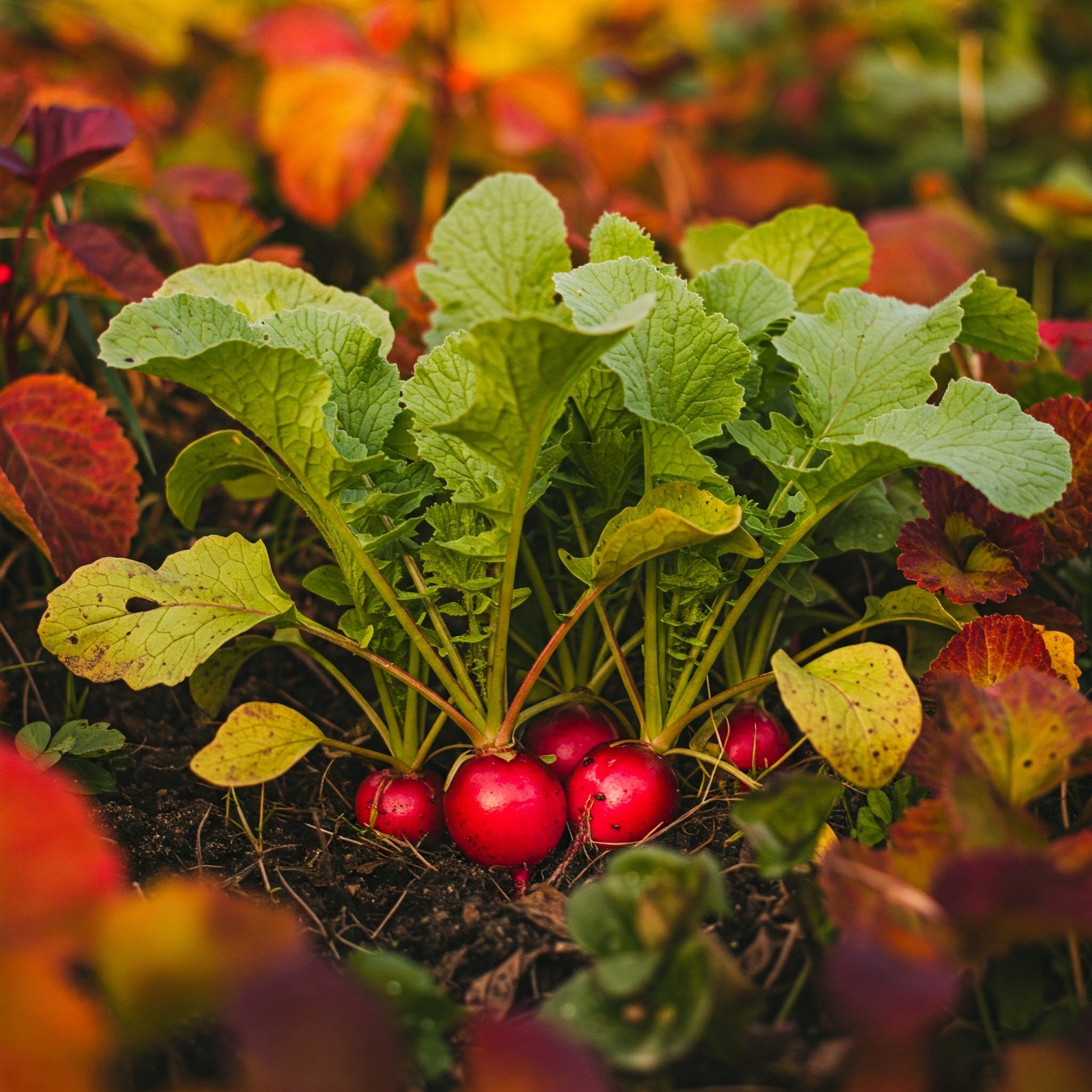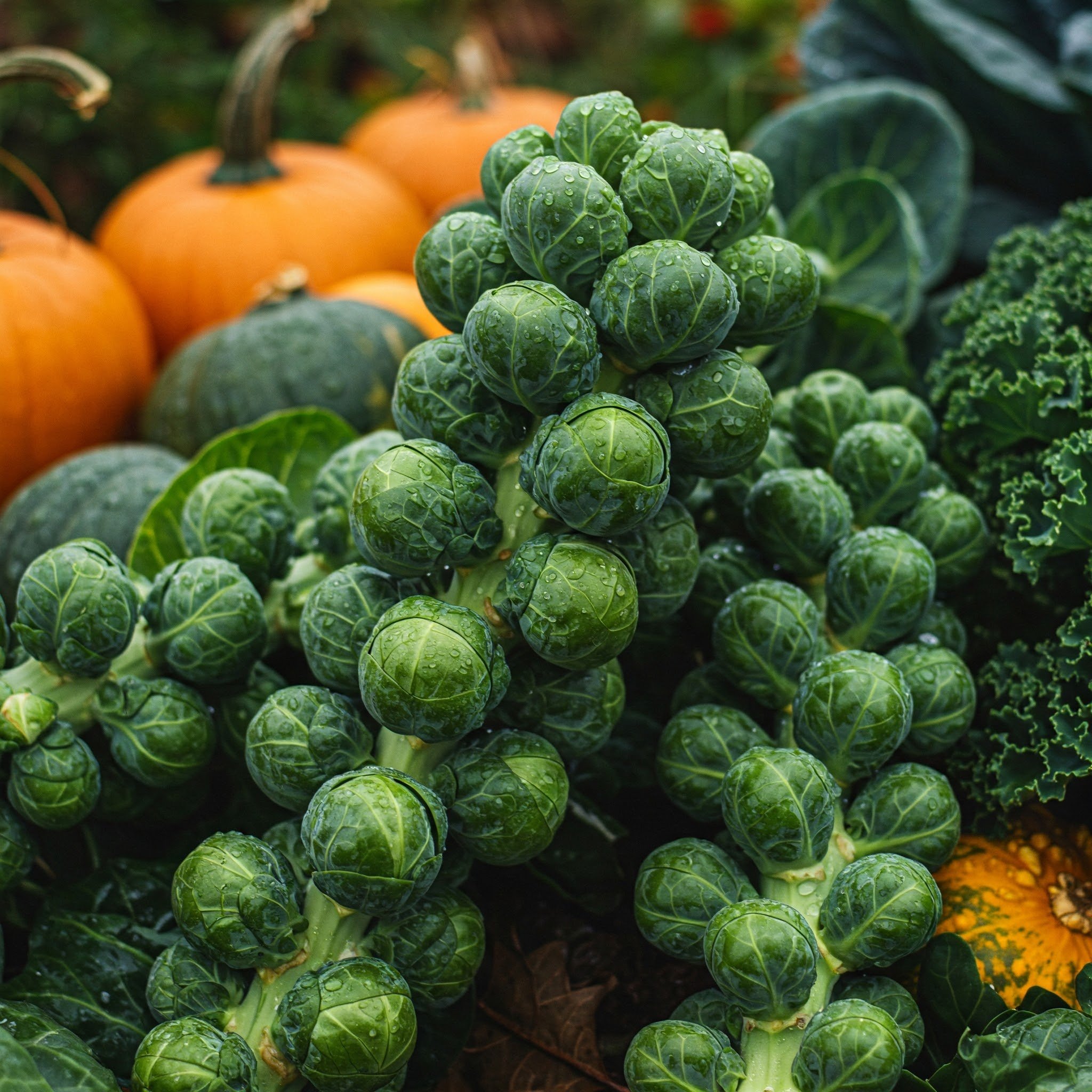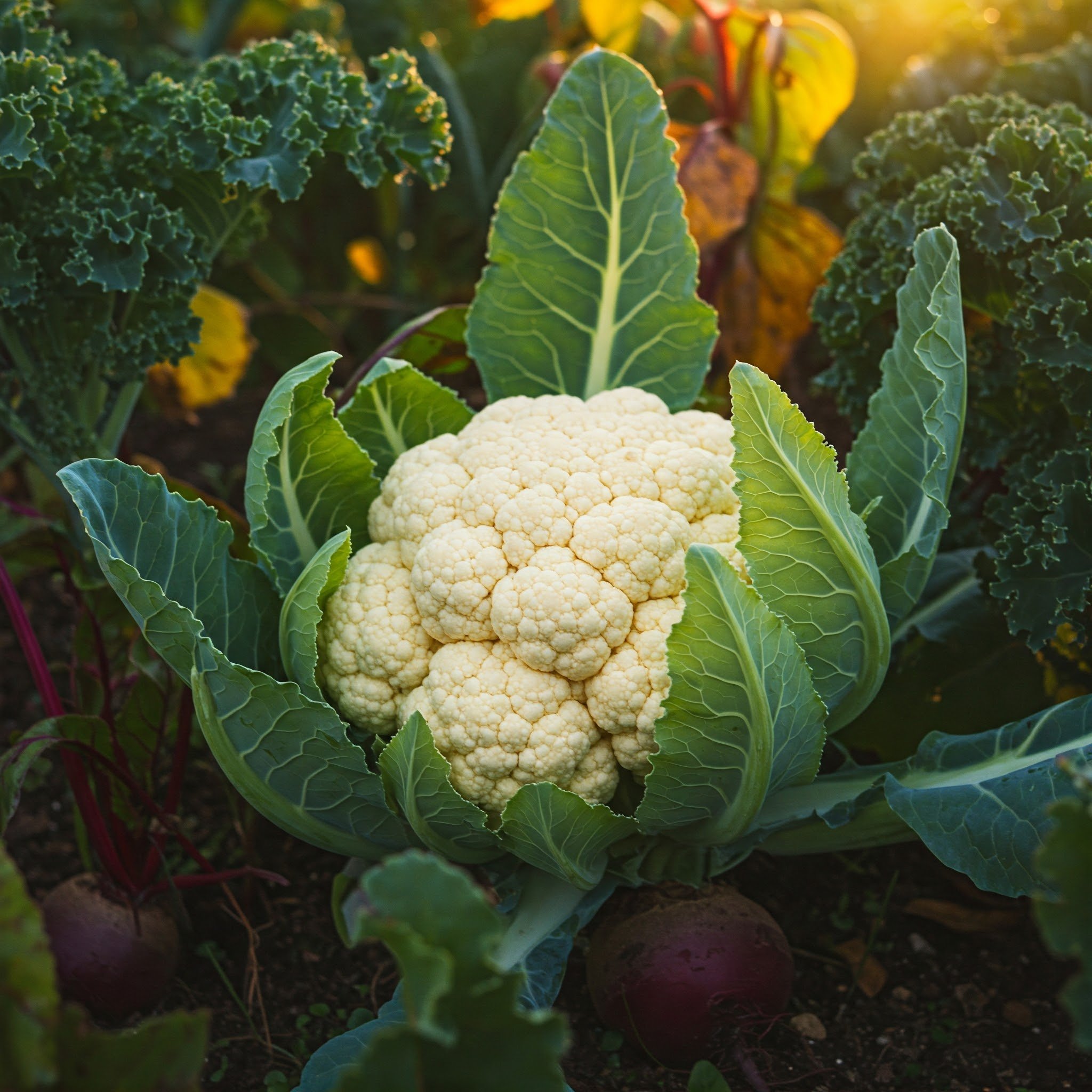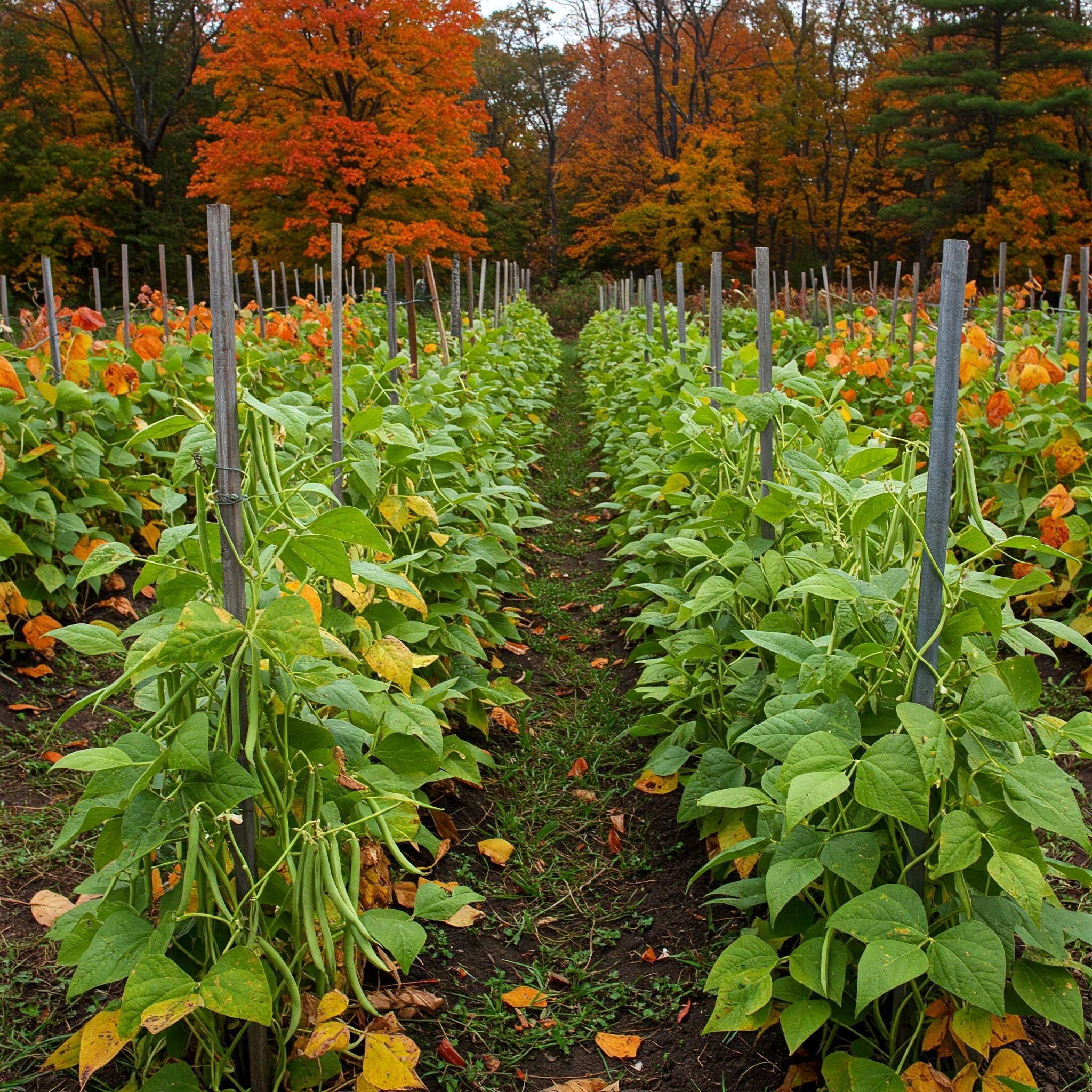15 Fall Garden Vegetables for a Bountiful Harvest
Embrace the crisp autumn air and discover the top 15 fall garden vegetables that thrive in cooler temperatures. Learn how to cultivate, harvest, and enjoy these seasonal favorites for a prolific homegrown feast.
Fall is the season of cozy sweaters, pumpkin-spiced treats, and colorful foliage lighting up the landscape. But did you know it’s also the perfect time to grow a wide variety of vegetables right in your backyard? Picture yourself stepping outside on a brisk morning to find crisp carrots, hearty kale, and succulent squash ready to be picked. It might sound like a daydream, but with the right preparation and a touch of TLC, you can turn that vision into reality. When summer fades into autumn, the slightly cooler weather brings unique advantages for vegetable gardening, such as fewer pests and milder soil temperatures. That means your plants can thrive without battling scorching heat or relentless insects. In this guide, we’ll walk through 15 delicious and hardy vegetables that can help you create a fall harvest brimming with color, flavor, and nutrition. Get your gardening gloves ready—it’s time to sow, grow, and reap the benefits of this abundant season.
1. Crisp Carrots
Carrots might be the unsung heroes of the fall garden, especially when you think about how sweet and crunchy they become after a kiss of chilly weather. When preparing their bed, loosen the soil down to at least a foot, because carrots need room to stretch out without hitting lumps or stones that might lead to funny-looking roots. Think of the soil like a luxury mattress for these veggies: soft and inviting, with plenty of nutrients to give them a running start. A balanced organic fertilizer or a generous layer of compost can make all the difference. After planting seeds, keep the soil consistently moist—carrots are finicky when it comes to water, and dryness can hinder germination. Patience is key; they take their sweet time to show up, but once they do, you’ll be thrilled. Harvest them when the tops are about the width of a pencil or thicker. That subtle crunch and natural sweetness you’ll taste? Pure fall magic.
2. Butternut Squash
Butternut squash is like the comforting cardigan of fall gardening: warm, reliable, and always ready to wrap you in coziness. Typically planted in late summer, these vining plants appreciate ample room to sprawl, so give them space or consider a sturdy trellis for vertical support. They relish the gentle warmth lingering in the soil post-summer, helping them establish before the chill truly sets in. As the squash matures, you’ll notice its skin toughening into that characteristic beige hue, signaling it’s almost harvest time. But don’t stop there—proper curing is essential. Think of curing like letting bread dough rest; it’s that final step that enhances flavor and prolongs shelf life. Store the squash in a cool, dry area for about two weeks, and they’ll keep for months. Ready to whip up a creamy soup or roast slices for a hearty side dish? This fall classic has you covered.
3. Luscious Lettuce
Lettuce in the fall is like a gentle breeze on a cool day—refreshing and downright invigorating. Cool-weather varieties, such as romaine, butterhead, or oak leaf, thrive when temperatures dip, offering tender leaves that add a burst of color and crunch to your meals. Well-draining soil enriched with compost helps these leafy greens reach their full potential. It’s a bit like ensuring they have a comfy pillow to rest their roots on. Keep the soil consistently moist but avoid waterlogged conditions that can invite diseases. You’ll also want to shield them from any unexpected frosts with a simple row cover or lightweight cloth. The bonus? Harvesting couldn’t be easier. Snip outer leaves as needed for fresh salads, allowing the inner foliage to keep growing. Before you know it, you’ll have a vibrant bed of lettuce demanding to be tossed into your favorite salad dressing.
4. Frost-Kissed Kale
Ever noticed how kale always seems to be trending? In the fall garden, it’s undeniably the star of the show. Cooler temperatures actually sweeten its flavor—much like how letting cookie dough rest in the fridge can elevate its taste. When choosing kale, consider varieties like ‘Red Russian’ or ‘Lacinato,’ each offering a distinct texture and color. Dig in a layer of compost or well-rotted manure before planting, because kale thrives on nutrients like a marathon runner thrives on carbs. As the leaves grow, harvest from the bottom up, allowing new growth at the top to flourish. This method ensures a continuous supply of those ruffled leaves that pack a powerful nutritional punch. And here’s a secret many gardeners cherish: after a light frost, kale becomes tastier, as if nature decided to sprinkle a little sugar on it, turning any dish into a hearty treat.
5. Robust Radishes
Radishes might be small, but boy do they bring the flavor—and they’re practically speed demons in the vegetable world. If you’re one of those people who likes immediate gratification, radishes are your best friend, often going from seed to table in about a month. They adore the cooler climates of autumn, staying crisp and fiery without turning overly spicy. Their growth can be compared to a swift sprint rather than a marathon, meaning they need well-loosened soil and a sunny spot to encourage that quick burst of energy. You can also stagger your plantings every couple of weeks to keep a steady supply rolling in. Imagine slicing open a freshly harvested radish—vibrant pinks and reds accenting your plate like a work of art. That’s fall gardening satisfaction in a neat little package, ready to perk up your salads or even serve as a crunchy snack.
6. Tender Spinach
Spinach wears the autumn season like a cozy blanket, thriving in nippy conditions that might put other plants to shame. The trick is to plant in successions—sow a batch every couple of weeks so you can keep enjoying fresh leaves all season long. Spinach acts like a shy guest at first: it might take a little time to germinate, especially if the soil is too warm. But once it settles in, it grows steadily. Water is crucial, especially during germination, so aim for consistent moisture without drowning the soil. An interesting quirk of spinach is that it can bolt (go to seed) if it experiences stress or sudden temperature swings. But in the calmer fall climate, that’s far less likely. The leaves remain tender, mild, and nutrient-packed, ready to be blended into smoothies, stirred into soups, or simply sautéed for a quick side dish.
7. Bountiful Broccoli
Broccoli is often seen as the tough guy of the vegetable patch, but in truth, it’s a bit like a gentle giant—it wants rich, well-draining soil and a bit of pampering to produce those lush green heads. To give broccoli a hearty start, test your soil pH, aiming for a slightly acidic range between 6.0 and 7.0. Add lime if your soil is too acidic, or work in compost to enrich nutrient levels. Plant young transplants in late summer or very early fall, and keep them watered during dry spells. You’ll know they’re ready to harvest when the flower heads are tight and firm—much like a dense bouquet of tiny green buds. Don’t wait too long, though, or you’ll find little yellow flowers instead of those perfect florets. A light frost can actually enhance broccoli’s flavor, giving you a bountiful harvest that’s sweet and crisp, perfect for roasting or stir-fries.
8. Hearty Brussels Sprouts
If you’ve sworn off Brussels sprouts because of a childhood memory involving mushy, overcooked lumps, it’s time to give them a second chance—especially homegrown in the fall. These mini cabbage-like sprouts form along a tall, sturdy stalk, requiring space and structural support. Pruning the lower leaves allows the plant to focus on producing those tight, compact sprouts that pop with flavor. It’s akin to a sculptor chipping away excess marble to reveal a masterpiece beneath. With patience, you’ll watch them develop from tiny nubs into plump orbs, each offering a unique, nutty bite after a light frost. Roasting them with a drizzle of olive oil and a sprinkle of salt can convert even the staunchest skeptics. Brussels sprouts are truly the underdog heroes of the autumn garden, proving that slow and steady can indeed win the race.
9. Colorful Swiss Chard
Swiss chard is the artist’s palette of leafy greens, flaunting vibrant stalks in reds, yellows, pinks, and oranges that light up your garden like a festival. But it’s not just about looks—these leaves are tender, versatile, and packed with nutrients. Swiss chard is relatively low-maintenance, thriving in a sunny spot with well-draining soil and a steady supply of water. You can begin harvesting outer leaves when they’re about 6-8 inches long, leaving the center intact so the plant can keep producing new growth. It’s like a renewable source of edible confetti! Plus, the plant tolerates mild frosts, making it a prime candidate for the fall season. Whether you sauté it in garlic, toss it into soups, or blend it into smoothies for a surge of color, Swiss chard delivers both style and substance in one gorgeous package.
10. Flavorful Cauliflower
Cauliflower may look unassuming, all dressed in white, but don’t underestimate its culinary potential. In the fall, this cruciferous wonder hits peak form, often rewarding patient gardeners with dense, creamy heads. One trick to keep cauliflower heads bright is to “blanch” them by tying the outer leaves over the head, shielding it from the sun. It’s a bit like giving cauliflower its very own parasol. Rich, fertile soil is a must, as this vegetable is a bit of a diva when it comes to nutrient demands. Keep an eye out for pests like cabbage worms, which also seem to fancy cauliflower’s mild taste. A fall harvest means you’ll likely dodge the biggest pest invasions of summer, making your job easier. Roast the florets for a caramelized delight or even mash them for a low-carb alternative to potatoes—cauliflower’s versatility is practically limitless.
11. Peppery Arugula
Arugula is that zesty friend who livens up any gathering with a bit of spice. This leafy green thrives in cooler weather, offering a peppery punch to salads, sandwiches, and even pizzas. Think of it as a palate awakener—a small handful is enough to make any dish more exciting. Arugula appreciates well-draining, compost-rich soil, and it’s happy with moderate amounts of water. Sow seeds in rows, then thin them out once seedlings appear, giving each plant room to flourish. Harvest leaves when they’re a few inches long for the best flavor, or let them grow a bit bigger if you prefer a more intense taste. If a cold snap is on the horizon, throw a row cover over the bed. This simple trick helps keep arugula fresh and ready for action, injecting some zing into your fall meals.
12. Satisfying Sweet Potatoes
Who says sweet potatoes are only for warmer regions? With careful planning, you can coax these tubers into a successful fall harvest. Start by planting slips—little stems with roots—into well-draining, fertile soil about 100 days before the first expected frost. It’s a commitment, akin to nurturing a slow-burning romance. Sweet potatoes love their sunshine, so pick a spot that gets at least six hours of direct light. As the vines sprawl, you’ll sense they’re setting the stage for a grand finale underground. Come harvest time, gently dig around the hills, watching for plump tubers. But don’t skip the curing step—similar to butternut squash, sweet potatoes develop richer flavor and better storage capabilities when left in a warm, slightly humid area for about two weeks. Think of curing as a spa day for these tubers, pampering them into sweet perfection.
13. Green Beans in Autumn
Green beans in the fall garden can feel like an encore performance—just when you thought the show was over, they pop up to deliver a final act of crunchy goodness. Bush beans are often quicker to produce, while pole beans require a bit more patience but reward you with vertical harvests that can continue until the temperature really dips. Provide a sturdy support system if you opt for pole varieties, making it easier to pick the beans and saving your back from too much bending. Although beans typically enjoy warmer temperatures, early autumn can be just right if you plant in time. Shield them from early frosts with row covers or old blankets if the forecast turns suddenly chilly. Snap a fresh bean right off the vine for a sweet taste test, and you’ll realize that a fall bean harvest is indeed a gift from the gardening gods.
14. Mouthwatering Mustard Greens
Mustard greens aren’t shy about their bold, slightly spicy flavor, which makes them a fantastic addition to stir-fries, salads, or even pickled concoctions. Plant them in late summer, allowing the seeds to germinate when it’s still relatively warm. By the time autumn arrives, you’ll have robust plants capable of handling cooler nights. Consider spacing your mustard green seedlings generously, as they like elbow room. It’s akin to giving a flamboyant dancer the entire stage to twirl and leap. Harvest leaves when they’re tender, around 4-6 inches in size, if you prefer a milder bite. Let them grow longer if you want that extra peppery punch. Either way, these greens offer a nutritional bonanza, packed with vitamins and minerals. Sauté them in a little olive oil and garlic, and you’ll soon realize what all the fuss is about.
15. Gorgeous Gourds and Pumpkins
When we think of fall, pumpkins and gourds practically define the aesthetic—from jack-o’-lanterns to holiday pies and farmhouse table decorations. Plant these sprawling vines early enough so they have time to mature before the cold sets in. They’re heavy feeders, so treat them to compost-rich soil and plenty of water to keep them on track. Picture the vines meandering through your garden, their big leaves shading the swelling fruit beneath. As harvest approaches, keep an eye on the stems; they’ll harden and turn a deep shade of brown, a sign your pumpkins or gourds are ready to pick. And let’s not forget their multifunctional charm: bake the flesh into pies, roast the seeds for a crunchy snack, or simply use them as festive décor. This dynamic duo brings an unmistakable dose of fall spirit to any garden.
Conclusion
Fall gardening offers a refreshing shift from the scorching days of summer, allowing you to cultivate vegetables that thrive in cooler, more forgiving temperatures. From the speedy growth of radishes to the slow and steady development of Brussels sprouts, there’s something immensely satisfying about watching these plants flourish as the leaves change color. Each vegetable we’ve explored has its own unique flair—carrots become sweeter, kale turns robust, and pumpkins hold the promise of festive carving or a rich, comforting pie. By carefully choosing varieties that relish cooler weather and using row covers or protective measures as needed, you can harvest a bounty of fresh produce well into the season. So, let your autumn garden be a canvas of flavors, textures, and colors, transforming every meal into a celebration of this transitional time of year.
Read next: 15 Fall Garden Plants for a Vibrant Seasonal Display
Frequently Asked Questions
How do I protect my fall vegetables from unexpected frost?
Use lightweight row covers or even old sheets to shield your crops overnight. It’s like tucking your plants in with a cozy blanket, preserving warmth and keeping frost damage at bay.What’s the biggest advantage of gardening in the fall compared to summer?
One major perk is fewer pests. Cooler temperatures often reduce insect activity, so your veggies can grow with less competition from unwelcome critters.Can I reuse the same soil from my summer garden for my fall crops?
Yes, but it’s wise to replenish nutrients with compost or a balanced organic fertilizer. Think of it as giving your soil a quick spa treatment before letting new plants move in.How late in the season can I plant fall vegetables?
It depends on your local climate and the vegetable in question. Generally, you’ll want to plant at least 6-8 weeks before the first expected frost for most cool-weather crops.Do I need special seeds labeled as “fall” varieties?
While some seed packets specify cool-weather or heat-tolerant varieties, many common vegetables have cultivars that naturally excel in cooler conditions. Always check the days to maturity and match them to your region’s frost timetable for best results.
